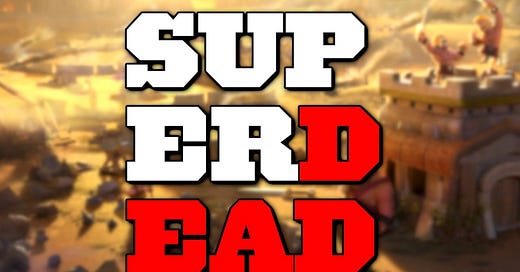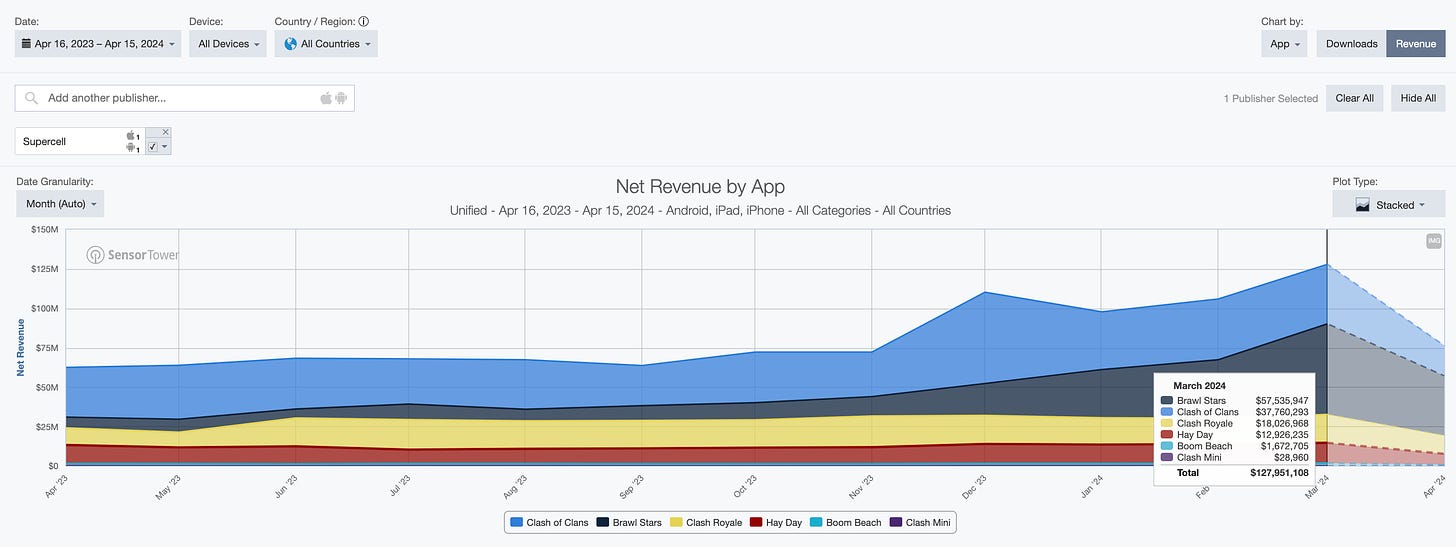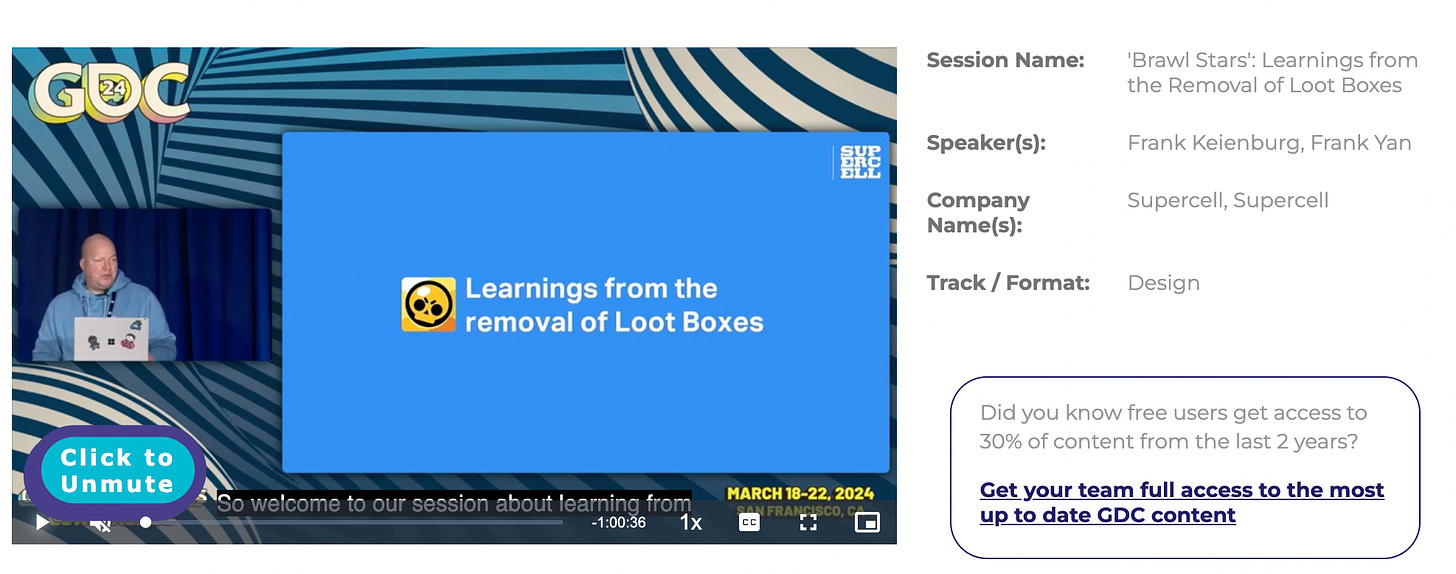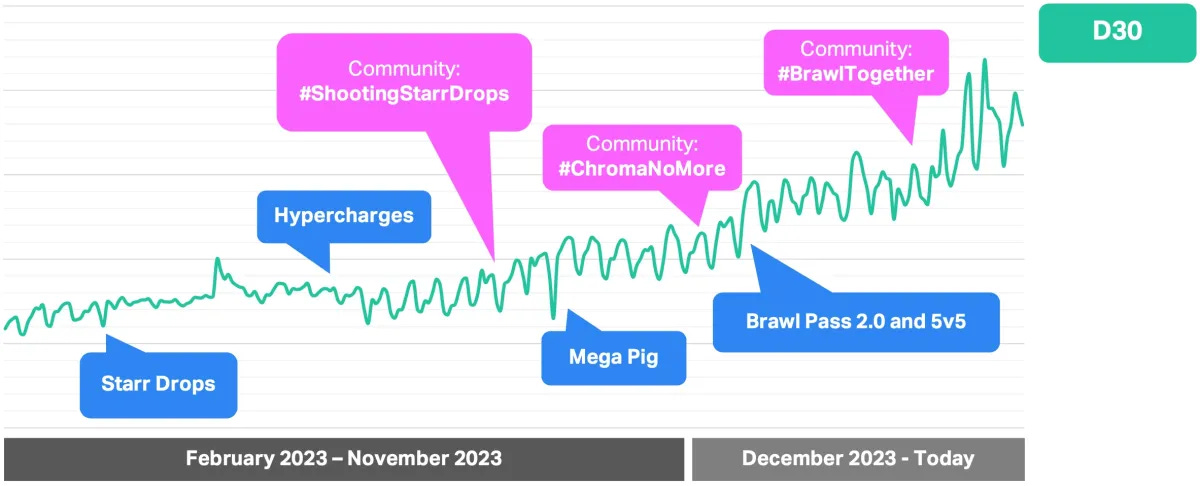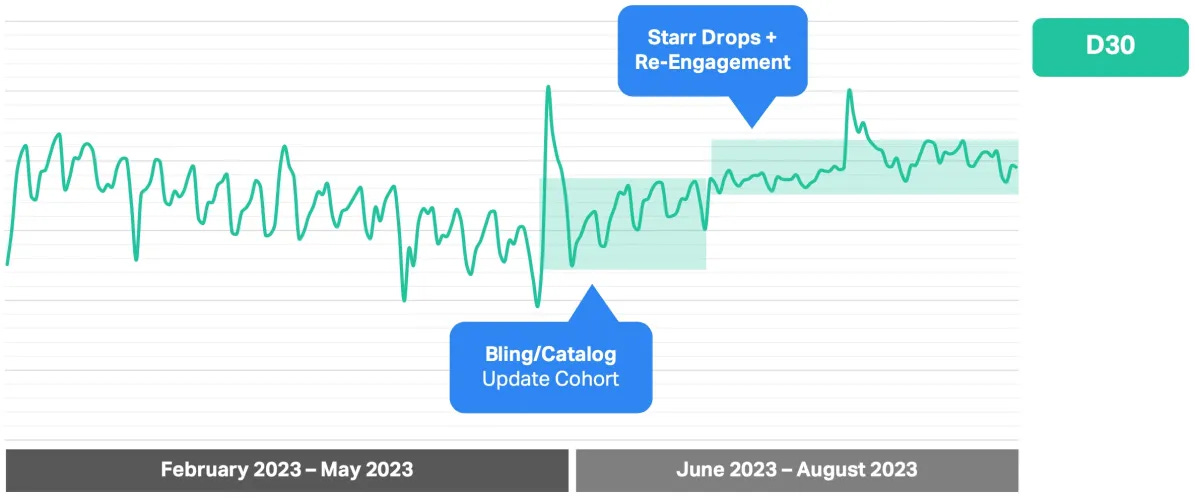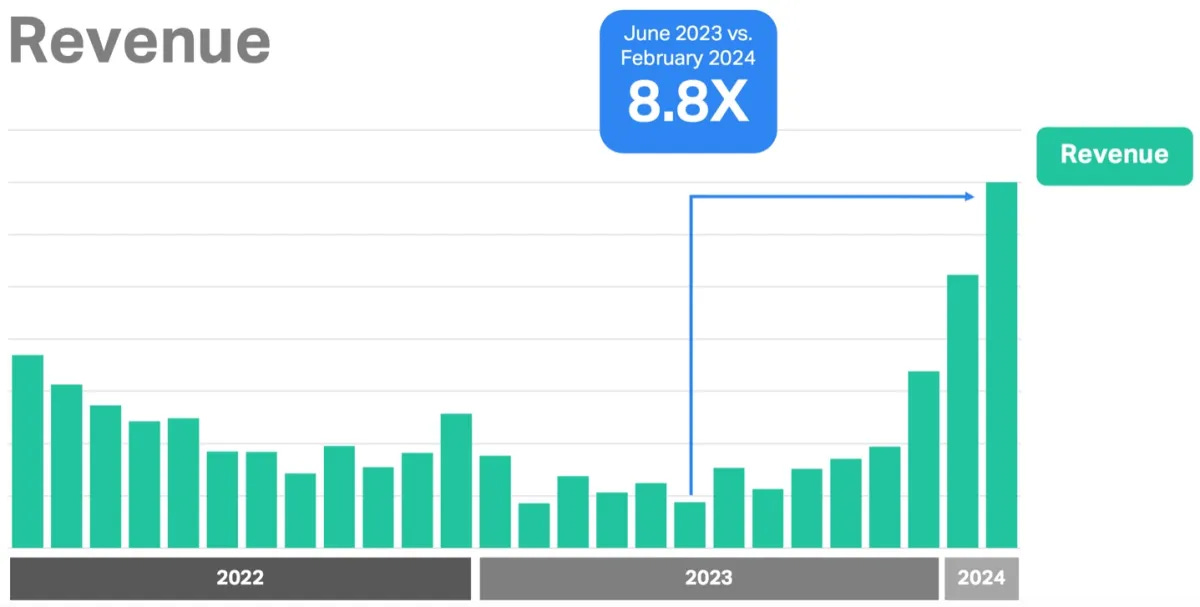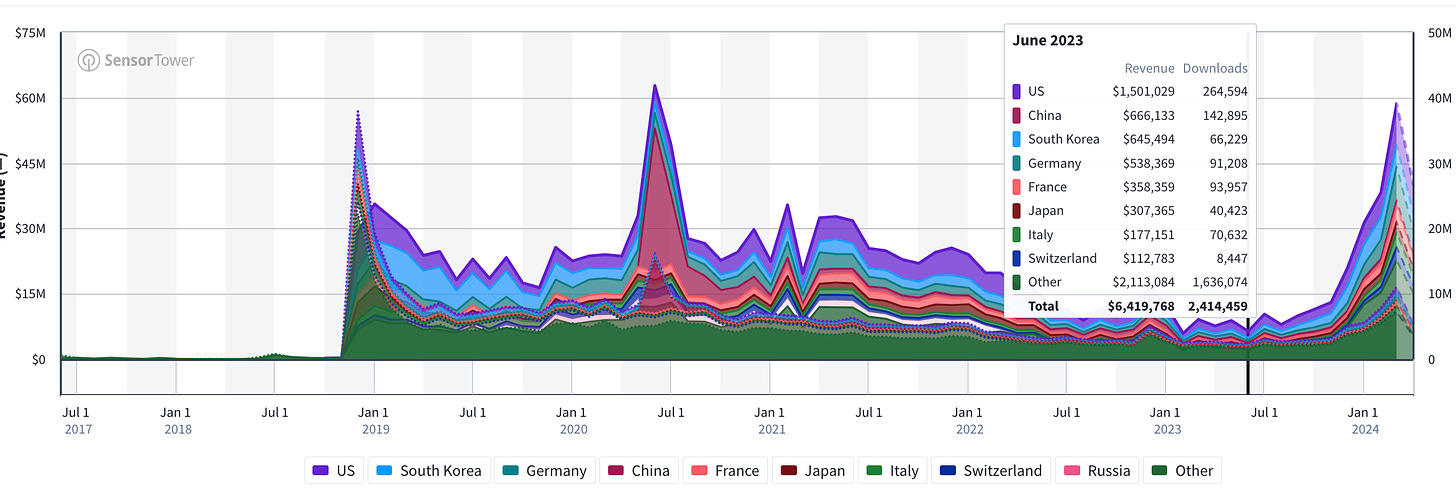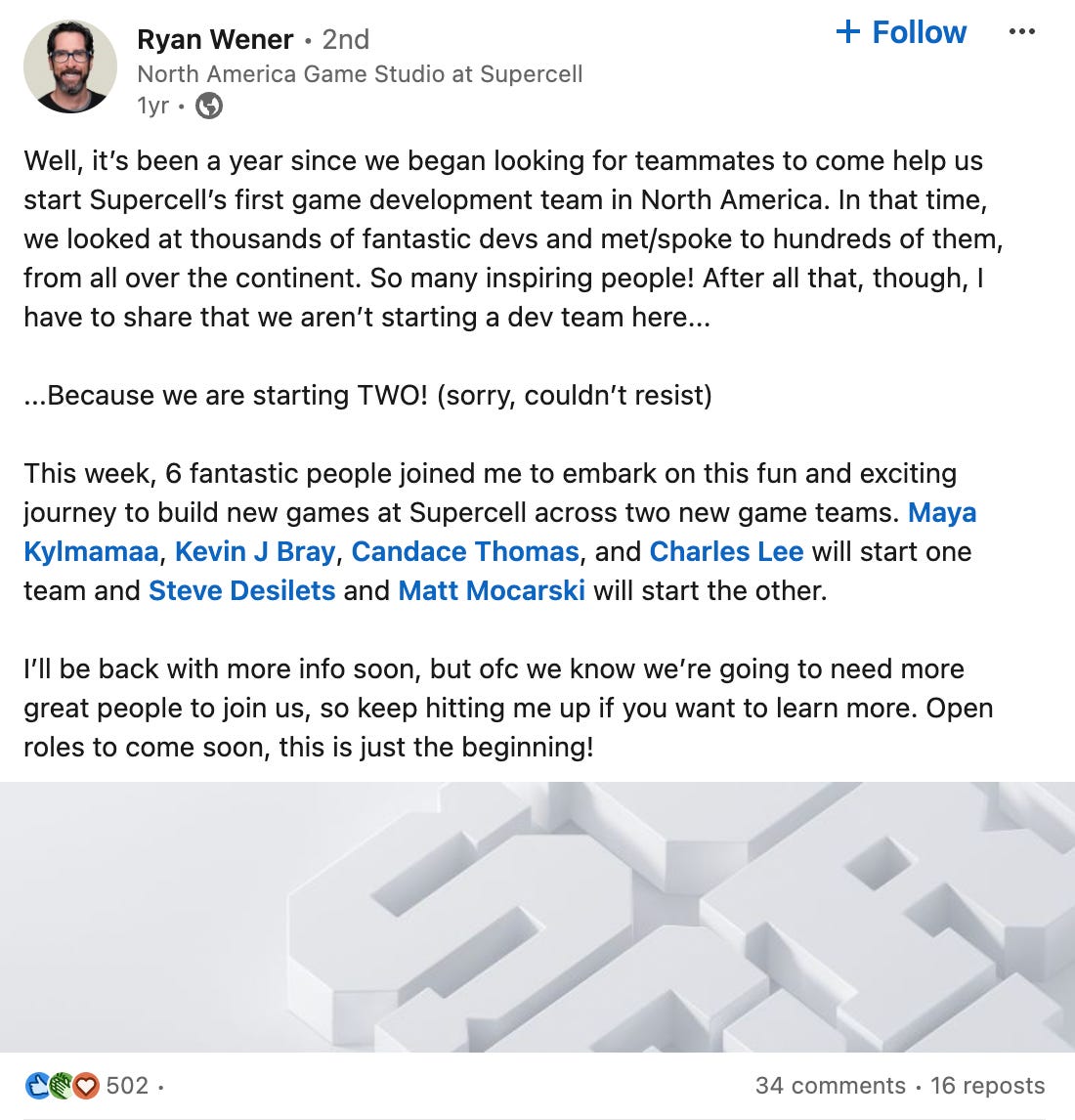☠️I am sorry, but Supercell is SuperDEAD
or is Supercell SuperBack? UA Lessons We Can Learn from
Back in the day, Supercell ads were crazy. It really made you stop and think “how can a mobile game afford Liam Neeson?” Clash of Clans, Boom Beach, and Brawl Stars are all in the star-studded lineup of one of the most recognizable gaming developers in the world.
Their impact is undeniable. It was unthinkable to host esports tournaments for a mobile game. For devs and UA managers, their freemium model was an absolute game changer. It explains why the Clash franchise alone generated over $10B at one point. In comparison, Genshin Impact has generated $5.3 billion since September 2020.
Are they what they used to be? No. Definitely not. They’ve had plenty of dips in recent years. In 2022, they pulled out of Russia in response to the ongoing war in Ukraine, which was their 14th largest country by revenue ($161 million in revenue). And their removal of loot boxes was considered a failure. Overall, the mobile gaming landscape is changing – obviously. Competition is insane and players are more price sensitive. It’s easier to switch to a new game and try something else.
BUT—Supercell is making a pretty good comeback. In fact, it’s not Superdead at all. I want to discuss a few strategies for how they’re doing it.
Supercell’s Numbers Today
200 million monthly active users from 5 games: Hay Day, Clash of Clans, boom Beach, Clash Royale, Brawl Stars
68% of Clash of Clans users came via word of mouth, 15% from app store
The last time Brawl Stars had a 12M net revenue week was May 2021. They hit 12M in Jan 2024.
Revenue & Downloads
Weekly Downloads: 1-1.5m in 2020-2021
Downloads drop by 50% in 2022-2023
Weekly Revenue: 6-8m in 2021
Weekly Revenue: 2-4m in 2022-2023
Revenue in 2024? BOOOOM!
We kinda saw it quite early and talked about it on our no-bullshit gaming show. Have you seen it?
Lesson 1: Challenge Assumptions
I’d like to start with this because it applies to every other lesson here. At the 2024 Games Developer Conference, General Manager Frank Keienburg at Supercell gave a presentation titled ‘Brawl Stars: Learnings from the Removal of Loot Boxes.” Out of all the insights that he shared, there was one that stood out.
“We were in an echo chamber and didn’t realize it.” – Frank Keienburg, GM at Supercell
“We didn’t know what our players wanted,” he continued. This sat at the core of Supercell’s challenges, especially after the removal of loot boxes lead to week over week revenue drop without any signs of rebounding.
This raises a ton of questions like: was it bad data? Or did they just not look at the data? How were decisions being made? What assumptions did they hold onto?
As they threw away their roadmap for Brawl Stars, they decided to move forward with introducing new features that would improve engagement and challenge their own assumptions.
Lesson 2: Introduce Incremental Gameplay Features
Removing loot boxes altogether is a big, controversial decision. Youtubers and creators often attribute the ‘downfall of Supercell’ to this one decision alone. They didn’t listen to their audience – and made assumptions that there would be long-term gains from removing the gacha system.
The data indicated that it took about 10 months to unlock a legendary character for the most engaged users. The assumption was that it wasn’t rewarding enough, and they needed to give players more choices and goals.
While that may have been true, they quickly realized that they loved the excitement of random awards. Removing loot boxes sucked the fun out of the whole game. This insight led to a new and improved system, Starr Drops, which gives players randomized prizes for progressing through the game and, most importantly, reintroducing a gacha element.
This, combined with re-engagement campaigns, helped kickstart their D30 player retention.
Thanks to the expensive loot box lesson, Supercell started to introduce small new features to see if it would improve engagement. Starr Road’s progression became linear, which unlocked brawlers in succession in a predetermined order. Costume and player customization increased monetization for hardcore players, but not casual.
They introduced hypercharges, which are special moves that unlock when a player reaches max level, which incentivizes players to max out their characters.
Ultimately, Brawl Stars grew MAU by 2.4x and DAU by 3.9x between June 2023 and February 2024, leading to 8.8x revenue growth.
Oh, how I love graphs without a Y-axis! Thanks to Sensor Tower, you can put it in perspective a bit!
Looks like a 10x now! FUCK YEAH! Kudos to the team
Lesson 3: Prioritize the Community
They began to shit out a bunch of new content that encouraged social and community engagement. At the end of the day, socialization increases retention, engagement, and even revenue. Playing with friends is a way to socialize, but also remain competitive – and adds an incentive to progress in the game.
They introduced the highly popular and chaotic 5v5 Brawl Ball mode that brought in extra flavor to the game. They run community events that reward the entire community if a collective challenge is complete. For example, 100 free Starr Drops for everyone if the community collects 1.5 billion Rare Starr Drops.
Source: https://www.reddit.com/r/Brawlstars/comments/18mgon0/highest_winstreak_so_far/
More social quests were added that rewarded players who play consecutive games with friends. And lastly, they added a win streak mechanic that allows users to win more rewards based on their win streak. It encourages players to peacock, and flaunt their max win streak, which players often share with their friends, similarly to Fortnite crowns.
Lesson 4: Leverage Strategic Partnerships
In a presentation at RovioCon 23, Supercell’s head of marketing, Iwo Zakowski, furthered the idea of community – but with a different solution. The ex-Burger King exec highlighted Clash Royale’s reputation of having a toxic community.
They partnered with Chess.com, which was exploding at the time. Identifying them as a relevant partner with a positive fanbase, they introduced:
Clash bots to play against on Chess.com
Clash-inspired chess variant called Spell Chess
A 16-player creator event called Chess Clash
Three weekly Clash Royale vs Clash of Clans Arenas
Two new clubs for Clash fans to join: Barbarian and King
Through this month-long campaign, they drove over 1 million new users and turned the tide against a toxic community, and built a new, more welcoming and positive one.
Lesson 5: Make the Right Hires
Our friend, Ken Landen, attributes many of Supercell’s new ideas to new superstar hires, which proves to be one of the best ways to destroy your echo chamber. Supercell made some significant changes in 2023 that led to two new studios led by:
Game lead Maya Kylmamaa — former Riot Games senior software engineer and technical lead for League of Legends, who also worked at Blizzard, DICE, and Lionhead Studios;
Game engineer Kevin J Bray — former Riot Games developer, who also served as executive director of Tonk Tonk Games;
Principal game designer Candace Thomas — former Riot Games senior manager and lead game designer, who also worked at Blizzard for 11 years (on World of Warcraft and Diablo franchises);
Art lead Charles Lee — former Riot Games artist, who contributed to the Arcane series and worked at Blizzard, EA, and Obsidian Entertainment.
Game lead Steve Desilets — former Amazon and Electronic Arts creative director, who also worked at Zynga and Valve;
Lead artist Matt Mocarski — an experienced artist who worked at companies like King, Blizzard, Crystal Dynamics, Amazon, and NCSoft.
This also led to Supercell changing how their company operates – treating new games and teams as startups that are given unlimited creative freedom, but with a limited budget. New games that acquire the most users and find a market fit using Supercell’s proprietary engine and Unity or Unreal, enter the next scaling phase called “Scaleup.” All games that don’t meet that growth threshold are killed early without wasting any additional resources, reducing the risk while upping the reward for teams working on new games.
Lesson 6: Short Term Thinking Leads to Long Term Failure
Supercell’s iterative approach to introducing new mechanics, content, and features focuses on the long-term gain of their game. While it may be tempting to spike revenue through in-game discounts, you’ll ultimately face the hangover effect, which occurs when a spike in revenue is followed by a valley in revenue because players are playing the game without spending any money.
To combat this, Supercell constantly ensures they’re not cannibalizing their audience or inflating their currency. They’re consistently introducing new content that incentivizes players to spend differently. Discounts are consistent enough that no players are paying full price for gems or items, which in itself is a price anchoring technique that makes players feel that they’re getting cut a good deal (and thus make more purchases).
Lesson 7: new Brawlstars UA & creative strategy
I have a feeling the UA team of Supercell is listening now. They are expanding outside the “brand” & Supercell bullsh-IP-ish UA activities. In our Brawl starts to the moon episode we touched quickly what they could be doing in terms of UA and creatives and oh my god, what a change. No more organics only!
Yeah, I know. It’s not because of two & a half gamers episode, but thanks to their amazing growth. But you never know .. you never know .. Anyway!
Creatives? Check them out:

